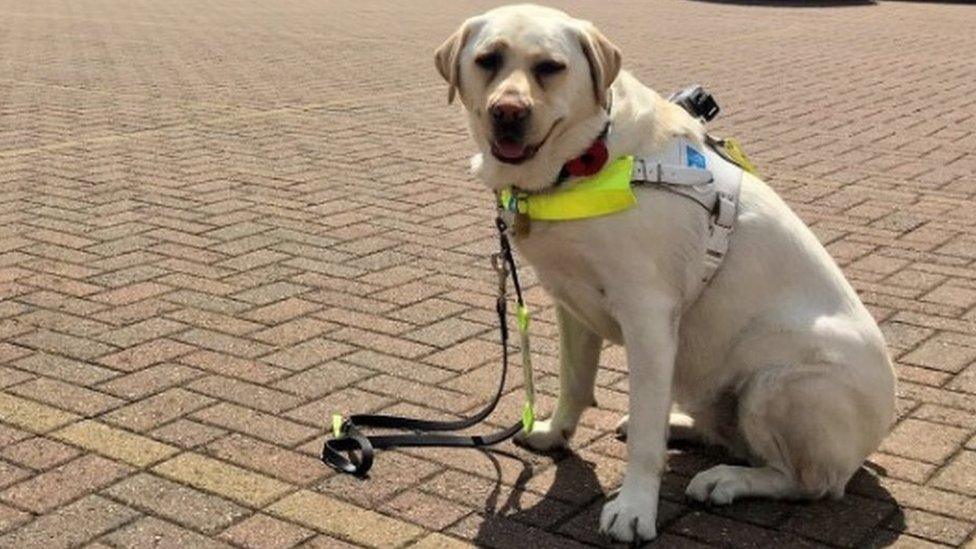Music matters: Choosing the violin over walking
- Published
Lea
Violinist Gaelynn Lea chose her musical craft over surgery which might have changed her life, but it is a decision she does not regret.
She now tours America and Europe with her haunting electro-folk music, but at just 3ft tall she plays her violin like a cello, enhanced by haunting electronic loops.
"When I was in fourth grade I saw an orchestra which came to school and I remember being blown away by the sound," she says. "I actually wanted to play the cello because it's beautiful, but it's obviously really big."
Lea from Duluth, Minnesota, who has Osteogenesis Imperfecta - or Brittle Bone Disease - settled for the much smaller, musical sister of the cello - the violin - after she scored 100% in a music aptitude test at school.
It was a decision which would see her travel the world.

"Because I did so well in the test, my teacher was really determined, and we experimented a lot until we worked out I could play the violin like a cello.
"She could have said 'this isn't going to work' or 'you should have done choir' but she was really encouraging. We made a good team and I'm very grateful that she was so open minded."
The duo developed a technique which involved Lea holding the bow "like a baseball bat" with the body of the instrument placed in front of her, like a cello, and attached to her foot so it wouldn't slip when she played. There were a few other workarounds which also had to be developed.
"I can't use my fourth finger because of the angle of my right hand, so I had to re-write a lot of classical music. It makes it a little harder to do some stuff, but I practice a lot," she says.
Lea turned to Celtic and American folk music when she was 18, after finding her busy schedule precluded her from joining the college orchestra.
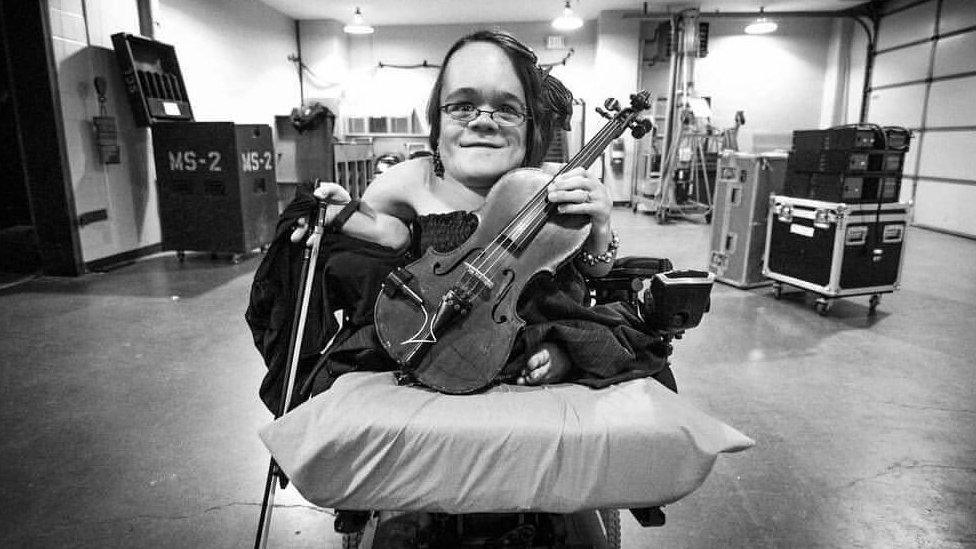
Gaelynn Lea in the studio before recording her Christmas album
The haunting sound which is her trademark was developed when she started experimenting with a loop pedal which enabled her to build and repeat several layers of sound.
"Looping fiddle music is one of my favourite concepts to play and it meant I could start doing solo shows," she says.
"I have a set loop that I start with but its never the same twice because I improvise a lot."
The inspiration for her songs and music comes from the people she knows or cares about and is often about the human condition. Lea says people "never have the same life experiences or outlook".
"Usually the songs come into my mind with a melody and I'll play my violin to figure it out, but it's all in my head," she says. "Nothing is written down, except the odd chord."
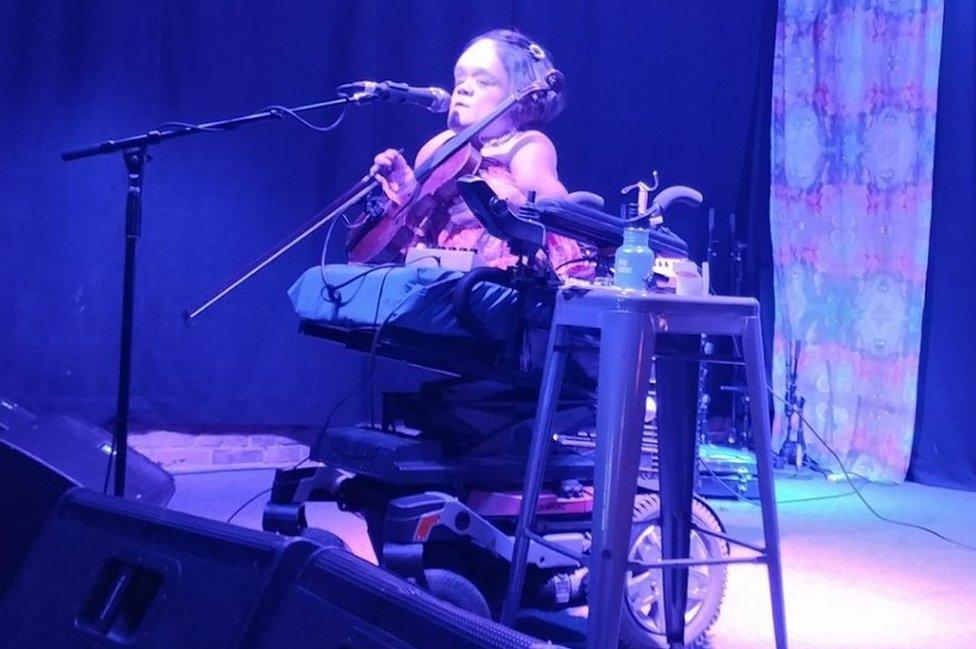
Lea in concert
Lea released her debut solo album All the Roads that Lead Us Home in 2015, and last year won NPR Music's Tiny Desk Contest - a name which does not reflect the height of the musicians - with her song Someday We'll Linger in the Sun which defeated more than 6,000 other submissions.
"I didn't expect to win but it's meant playing in a few places including New York which was a dream of mine, but I really want to play Paris.
"The thing that I love about performance is the energy in the room, when you're connected to the audience and that can happen anywhere - the pizza shop, a cafe, busking - I've had some moments where I've connected with the audience and it's like a spiritual experience."
Despite the apparent ease with which she plays Lea has to contend with the continual challenges of Brittle Bone Disease - a genetic defect in the collagen in the bones.

Osteogenesis imperfecta

A genetic condition present from birth and more commonly known as Brittle Bone Disease
Collagen (the protein responsible for bone structure) is missing or of low quality and cannot support the minerals in the bone, making it weak and susceptible to fracture
Bones may also be short or bowed
In severe cases, people with OI can have between 200 and 300 fractures by the time they reach age 18
Source: Great Ormond Street Hospital, external

She has "only" broken 16 bones since she was born and is proud to say she hasn't had a fracture in the last five years.
One of her arms is twisted which can make things more difficult, but she decided against a potentially life-changing operation for fear it could hamper her music career.
Known in America as "rodding", the operation would have seen her arm and leg bones threaded onto a metal rod which would act as a splint and keep the bone aligned if it fractured. It could also have improved her mobility.
"I actually chose not to walk and I'm happy," she says. "I could have had operations to put rods in my arms and my legs but there was no guarantee how well they'd work. I'd already started playing the violin so I didn't want to have my arms operated on and have my nerves damaged.
"I use an electric wheelchair so I didn't feel I needed to walk to make my life more fulfilling. And I don't think I'd even be who I am without brittle bones so I don't regret the decision."
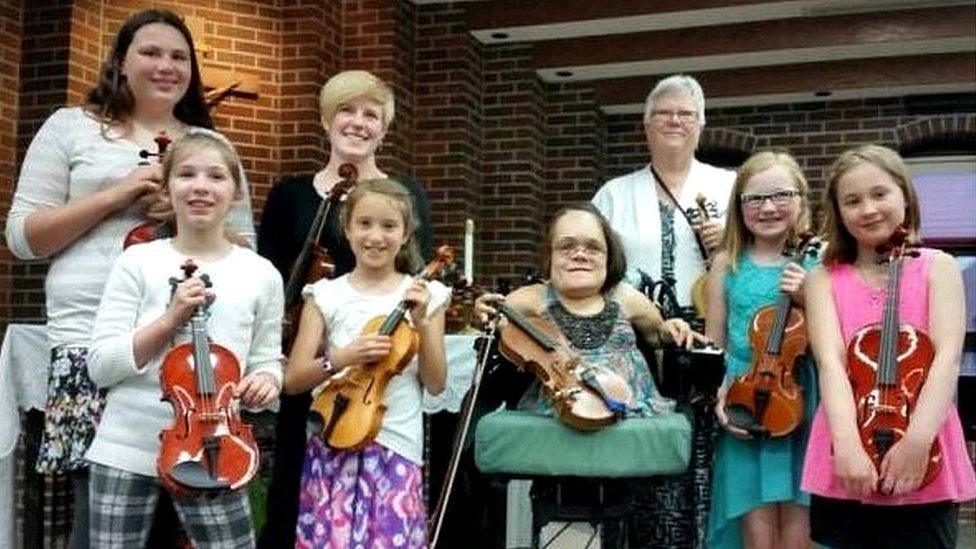
A selection of Gaelynn's violin students
When Lea is not on the road she works as a violin teacher and has 15 students on her books.
"I teach them the regular way - with the violin up on their shoulder," she says. "I watched some videos so I knew how it should be held and I understood the physics but it was trial and error to begin with."
Her students cover a vast age spectrum, and her main hope for them is that they always remain involved in music. "Music is such an important part of peoples' lives," she says.
Throughout her own musical development Lea says she has come across some people who see her disability as an obstacle, but many others have been supportive.
"If you think about it - I just play the violin at a different angle. It's still the same music but some people cant' get over the fact it's not regular.
"I'm sure there'll be other challenges, but it's not impossible. And I don't want to be limited by my disability."

More from BBC Ouch
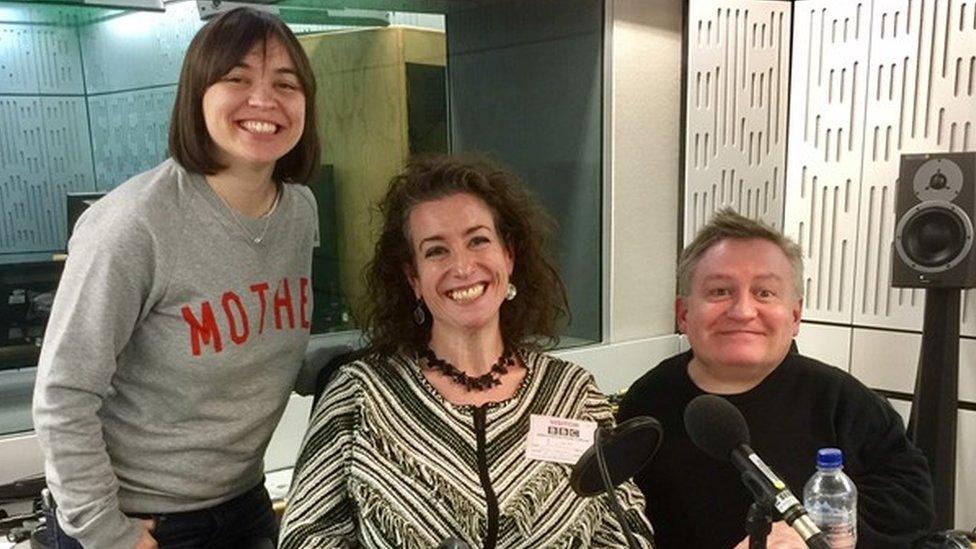
Meet the NHS mental health director who was hospitalised for depression and hear about her open letter which went viral.
For more, follow on Twitter, external and Facebook, external, and subscribe to the weekly podcast.
Related topics
- Published9 January 2017
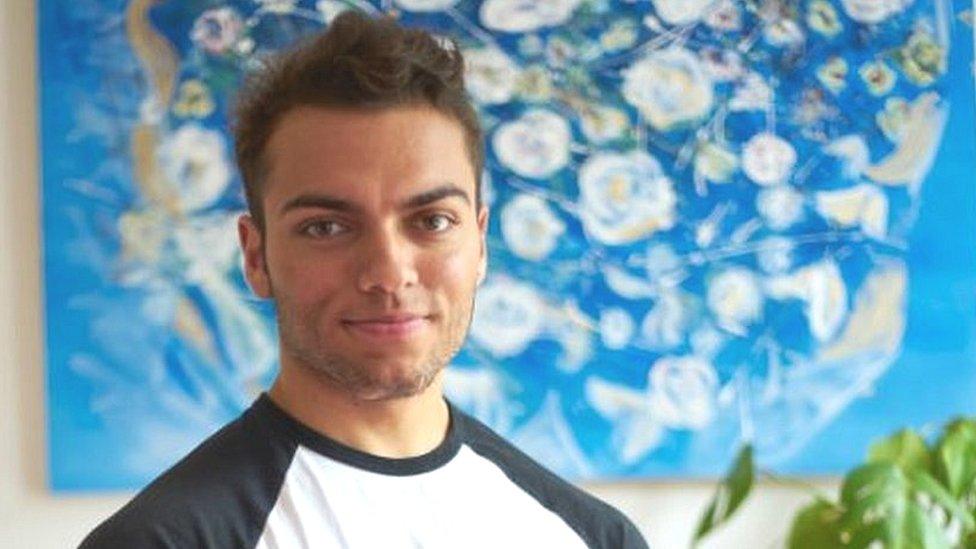
- Published4 January 2017
